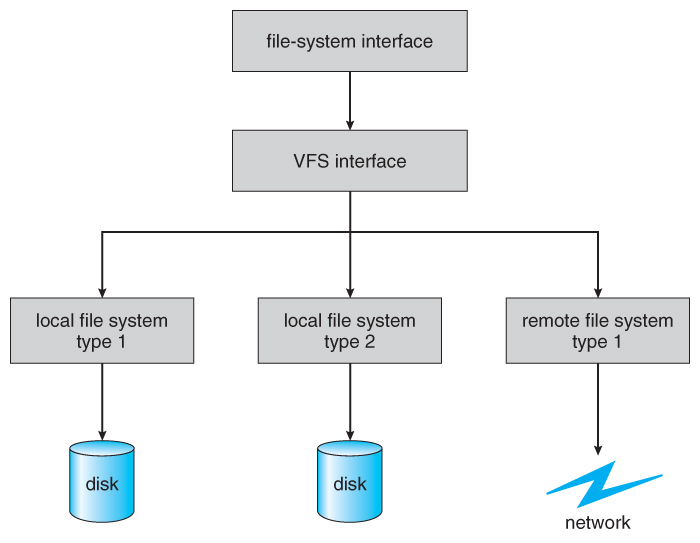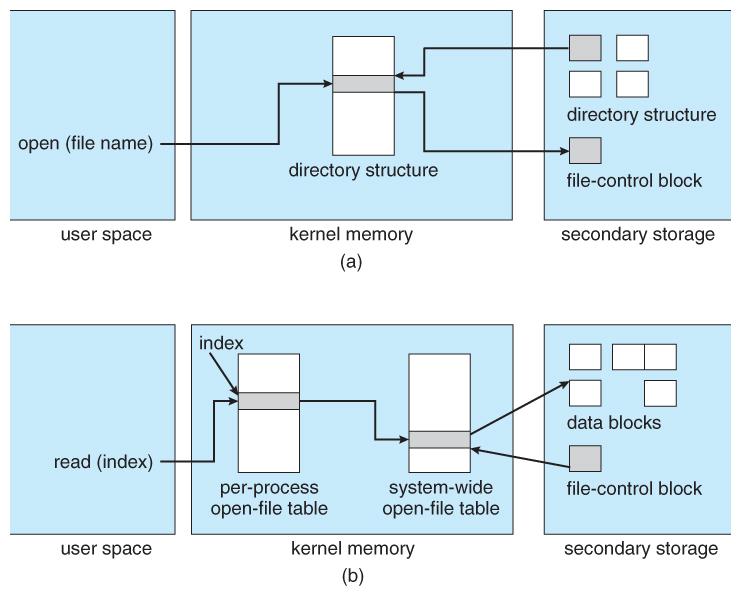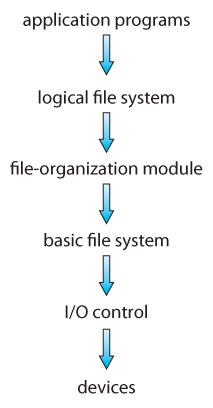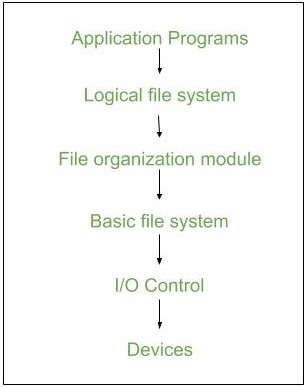File System Implementation Schemes to Memory Management Implementation Schemes
10 Points at least. The Single contiguous memory management scheme is the simplest memory management scheme used in the earliest generation of computer systems.

Operating Systems File System Implementation
File Systems File organization Access methods Directory Organization.

. Main memory RAM is where most of the applications run. However a disk file system is the basic storage media which can use a flash memory device. Contiguous linked indexed 3.
In-memory directory structure 4. Operating System - Memory Management. It is a series of bytes that is organized into blocks.
Memory Management in Operating Systems Simple Explanation. File systems and virtual memory perform similar functions in different spheres. It is superior to utilize a file system that is designed for a flash device.
This increases efficiency as the right user receives the correct file. An object file is a sequence of bytes organized into blocks that are understandable by the machine. File-System Structure File-System Implementation Directory Implementation Allocation Methods Free-Space Management Efficiency and Performance Recovery Log-St.
Memory management is the functionality of an operating system which handles or manages primary memory and moves processes back and forth between main memory and disk during execution. Caching The most common technique used to reduce disk access time is the block cache or buffer cache. Memory Management 4 MEMORY MANAGEMENT The concept of a logical address space that is bound to a separate physical address space is central to proper memory management.
A flash file system is responsible for restrictions performance and special abilities of flash memory. File-system Performance Since the access to disk is much slower than access to memory many file systems have been designed with various optimizations to improve performance as described below. Type your list of comparisons making sure that you number the list.
System-wide open-file table 3. The operating systems reside permanently in one partition generally at the lower memory and the user process is loaded into the other partition. Memory Management is an essential function of the Operating System.
The boot block in UNIX or the partition boot sector in Windows contains information about how to boot the system off of this disk. Operating System Concepts Essentials 8th Edition 107 Silberschatz Galvin and Gagne 2011 File System Layers Cont Logical file system manages metadata information Translates file name into file number file handle location by maintaining file control blocks inodes in Unix Directory management Protection Layering useful for reducing complexity and redundancy but. In-Memory File System Structures On-disk and in-memory structures needed to implement a file system.
Operating Systems Memory Management 35. In a consistent file system both counts will agree. 112 File-System Implementation 1121 Overview.
Simple but fixed number of filessubfolders. File systems store several important data structures on the disk. Unix uses system-wide open table.
A source file is a sequence of procedures and functions. It has an exclusively defined structure which is based on its type. A companys security strengthens with modern file management.
This will generally be the first sector of the volume if. A file management system allows admins to set limits permissions and roles for files. Also referred to as virtual address Physical address address seen by the memory unit Logical and physical addresses are the same in compile.
Its responsible for data storage and retrieval and space management on the storage device or precisely. Folder Implementation Each folders contents are stored in one or more disk blocks. Linear list of file names each file name pointing to files data blocks.
Single two-level hierarchy File system and directory implementation Allocation schemes. In-memory partition table In some OSs file system scheme used as interface to other system aspects. The physical layer is the concrete implementation of a file system.
Need allocation scheme as for file data. This includes granting different levels of access to files and assigning roles for specific users. It is a series of characters that is organized in lines.
Also to reuse the space released from deleting the files free space management becomes crucial. Look at several schemes ECS 150 Operating Systems Memory Management 16. File system 1.
A boot-control block per volume aka. Associative Memory Associative memory parallel search Address translation A A. A File Structure needs to be predefined format in such a way that an operating system understands.
Three types of files structure in OS. File System Implementation Schemes to Memory Management Implementation Schemes Get link. Within blocks folder contents can be organized as.
It is one of the main things people look for when buying a new. The next layer is the virtual file system or VFS. Thus user perceived memory can both grow without affe.
When operating system defines different file structures it also contains the code to support these file structure. This comes under one of the two main functions of an Operating System resource management. Virtual memory creates apparently contiguous memory regions from the combination of physical memory frames backing mass storage and translation tables.
File-System Implementation File-system needs to maintain on-disk and in-memory structures on-disk for data storage in-memory for data access On-disk structure has several control blocks boot control block contains info to boot OS from that volume only needed if volume contains OS image usually first block of volume. File System Chapter 14 File-System Implementation Read the Chapter -- Then compare file system implementation schemes to memory management implementation schemes Chapters 9 10 noting the similarities. Unix MS-DOS support minimum number of file structure.
The system maintains a free space list which keeps track of the disk blocks that are not allocated to some file or directory. The physical file system interacts with the storage hardware via device drivers. Per-process open-file table 2.
Memory management keeps track of each and every memory location regardless of either it is allocated to some process or it. Other Apps - April 18 2022 File System Implementation In Operating System Geeksforgeeks Operating Systems File System Implementation Operating Systems File System Implementation Operating Systems File. In this scheme the main memory is divided into two contiguous areas or partitions.
The system keeps tracks of the free disk blocks for allocating space to files when they are created. Logical address generated by the CPU. Bitmap Implementation Memory divided into fix-size blocks.
Compare file system implementation schemes to memory management implementation schemes noting the similarities.

Operating Systems File System Implementation

File System Implementation In Operating System Geeksforgeeks
No comments for "File System Implementation Schemes to Memory Management Implementation Schemes"
Post a Comment